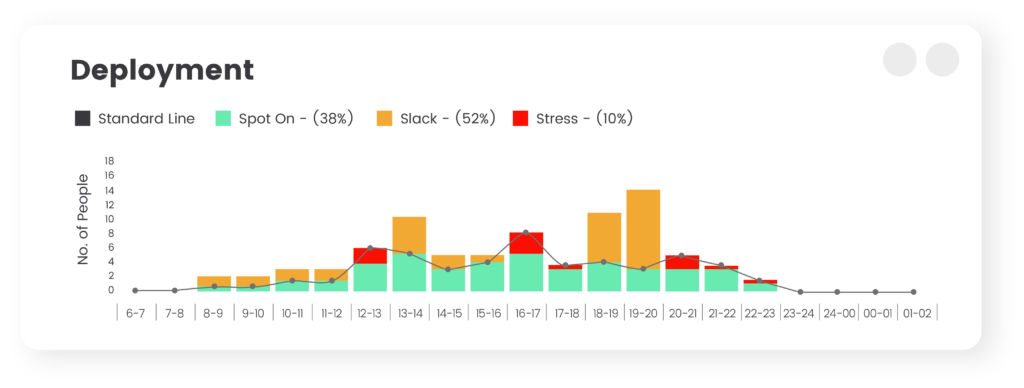by Abby Henson | Nov 28, 2023 | Blogs, Thought Leadership
According to data from S4labour, the 9.8% increase to NLW announced yesterday by the Chancellor will mean an increase of 11.5% to costs for operators when considering the weighted impact of age distribution in the industry.
The new wage of £11.44 will apply to employees over 23s, who make up 70% of the hospitality workforce, as well as the 9% of workers who are 21 to 22 years old.
The statistics also reveal that 14% of industry workers fall into the 18 to 20 bracket, with their new wage rising by 14.8% to £8.60. Under 18s, who make up 7% of the industry’s workforce, will see a 21.2% increase in pay.
Assuming all workers are paid at minimum wage, these increases will bring hourly labour costs up 11.5% for operators.
Alastair Scott, CEO of S4labour, commented: “The headline rate at 9.8% was going to be tough enough to manage, without factoring in the high proportion of young people working in our industry. This makes it an even bigger challenge, just when we thought we might be able to get back onto an even keel.”
by Abby Henson | Nov 22, 2023 | Announcements, Hospitality
Autumn Statement 2023
Chancellor Jeremy Hunt has today released his Autumn Statement, bringing forward measures on NLW, alcohol duty, business rates and NI that will have an impact on the industry and its workers.
The National Living Wage will see an increase of 9.8% to £11.44 an hour, averaging an additional £1800 a year per full-time employee. This new rate now also applies to employees who are 21 and 22 years old – previously, it was only for workers over the age of 23. Though beneficial for the staff, this rise means a typical pub will see labour ratio hike around 3 percentage points. In addition to this increase, employee NI will drop from 12% to 10%, though employer contributions to NI have not been cut.
The extension of business rates relief is good news, and will help around 230,000 smaller retail, hospitality and leisure businesses in 2024-25. It also seems the Chancellor has listened to calls for alcohol duty to be frozen, meaning there is one less cost for operators to worry about until August next year.
Chief Growth Officer at S4labour, Richard Hartley, commented: “We have spoken to operators who are currently struggling with labour ratios of 34%+, so this further increase in spend will be challenging, and we anticipate this will put pressure on consumer prices. As wages continue to rise, managing the cost is going to be the single-most important factor in the future success of our industry.”
by Abby Henson | Nov 13, 2023 | Convenience Stores
Leading rota, people and payroll tool provider S4labour, has shared some tips to help independent convenience and forecourt operators best manage their labour throughout the busy holiday season.
It becomes increasingly difficult to balance the needs of your shoppers and your team as well as thinking about profits and compliance when experiencing these different patterns of trade. So, for independent retailers, it is well worth investing in tools that can help them do the work efficiently, cost-effectively and without stress.
Some of the challenges facing retailers will include requests for time off or additional hours, as well as scheduling according to big events that are likely to see people get together, like summer sporting events, barbecues and local fetes.
Garry Craft, S4labour, Managing Director Convenience Stores, says: “Walking the line of having enough staff whilst not overspending on a labour budget can be difficult.
The first step for successful labour management is to use tools and insights that give visibility of historic sales data and labour spending. Looking at week-by-week and day-by-day labour spending will give more insight into how retailers should be planning rotas, compared to just looking at quarterly totals.”
The rota, people and payroll tool provider also state that having this visibility of labour spend, particularly before it is spent, will avoid unexpected costs for retailers.
Craft continues: “Circulating rotas earlier will help employees visualise shift plans easily, and as a result, any problems are much easier to spot. Synchronising rotas with the holiday calendar allows managers to see staff availability on key dates.
Maintaining effective communication with staff regarding rotas is an important follow-up step. This can be made simple through an app or system that serves as one point of truth. Managers can organise shift patterns and staff can volunteer for open opportunities, which ensures demand is always met and everyone is on the same page.
We appreciate that location will affect holiday planning, as those in tourist locations will be up over the summer, and different stores will trade in different ways. S4labour recommends having tools in place that work around your individual business needs.
There are tools out there that make it easy for owners to manage holidays, create balanced schedules and check rotas against time and attendance clock-in and out times.”
by Abby Henson | Nov 10, 2023 | Blogs
In the world of hospitality, managing costs effectively is an ongoing challenge. Traditionally, labour ratio has been a key metric for measuring success, but we think a more nuanced approach is needed to ensure both efficiency and quality. At S4labour, we use the metric of ‘slack hours’ to measure the effectiveness of cost management.
Understanding slack:
Slack refers to labour hours used on the rota that are above what is needed to deliver the agreed service levels. It’s the extra time that can be utilised for tasks like polishing cutlery and cleaning menus, without putting undue pressure on the staff. Finding the right balance of slack is crucial – aiming for around 25% slack is considered optimal for many businesses, but there are variations depending to scale and style of site.

The pitfalls of too much slack:
Overstaffing, with high levels of slack for a prolonged period, is not only a poor use of labour budget, but it also leads to a decline in team energy and concentration levels which ultimately affects service quality. Striking the right balance requires consideration of the specific needs and scale of your business.

The importance of rightsizing:
The size of your business plays a role in determining the ideal slack percentage. Larger sites can operate with lower slack percentages (around 15%), as more team members allow for better-designed shift patterns. This nuanced approach ensures that the right amount of slack contributes to a well-functioning operation without compromising on service.
Adjusting labour costs not only optimises efficiency, but it will also lead to happier staff and improved service quality. By managing slack hours, you create an environment where employees can excel without the stress of excessive workload.
Finding the right balance between labour costs and service quality is ultimately the key to better cost management. When measured and used effectively, slack becomes a powerful tool for improved service and staff satisfaction. Whether you run one bar, or manage multiple restaurants, success starts with optimising your labour costs.
Get in touch with S4labour to explore how we can help you to cut the slack and run a more efficient, happier and service-oriented business.
by Abby Henson | Nov 6, 2023 | Sales Figures
The latest figures for October reveal the industry experienced a 1.4% decrease in sales overall, compared to the same period last year, according to data from S4labour.
This decline was driven by sites outside of London, with sales dropping by 2.5%, whilst London saw a moderate increase of 3%. October also marks the first time since March that overall sales have been down.
S4labour’s Chief Growth Officer, Richard Hartley, commented: “As we begin the run up to Christmas, this downward trend is not what we would have hoped for, especially considering last month’s staggering 9.6% growth. Only two out of the ten months so far this year have seen a decline, so we are optimistic that as celebrations begin over November and December, we will start to see some positive figures again.”



